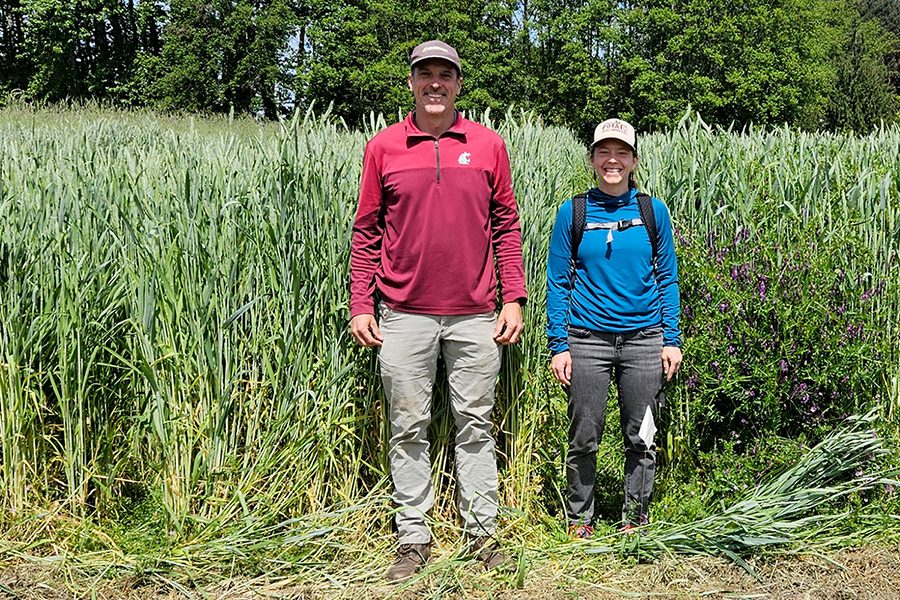
Doug Collins and Teal Potter, co-authors on the new paper, stand in a field of triticale. The cover crop was grown to study its viability as a biofuel source.
A new paper authored by Washington State University researchers and partners based in the Tri-Cities identifies two cover crops that have positive or neutral impacts on soil quality and can be harvested and sold for biofuel production.
The researchers looked at four different crops and found that wheat and rye hybrid triticale and a vine-like legume called hairy vetch showed the most promise in serving farmer needs to protect fallow fields while also providing stable or high biofuel yields, according to a release.
“The idea is to unlock new cover crop supplies,” said Miki Santosa, a graduate student in WSU’s Department of Biological Systems Engineering and corresponding author on the paper, in a statement. “We don’t want to harm the economics for farmers or hurt the soil, so we looked closely at pain points farmers experience when cover crops are used.”
The paper was published in science journal Biomass and Bioenergy. The research was a joint venture of WSU, including its Center for Sustaining Agriculture and Natural Resources and Institute for Northwest Energy Futures, and Pacific Northwest National Laboratory.
Daily and Monthly News
Mailing Address: 8656 W. Gage Blvd., Ste. C303 Kennewick, WA 99336 USA


All content copyright © 2025 Mid-Columbia Media Inc. All rights reserved.
No reproduction, transmission or display is permitted without the written permissions of Mid-Columbia Media Inc.
Design, CMS, Hosting & Web Development :: ePublishing